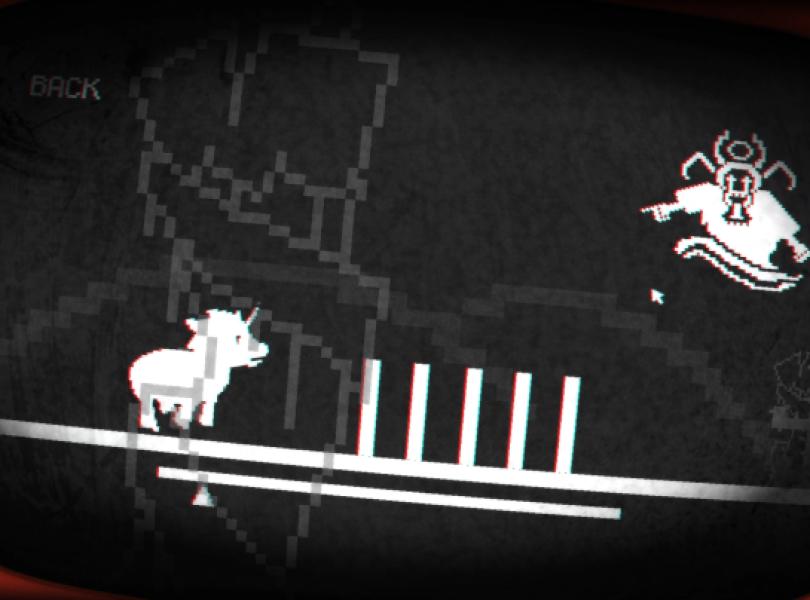The devil is in the details.
By Cam Shea
Pony Island is not a good game. It’s an awful game, in fact. You gallop from left to right, jumping over gates and blowing gusts of wind at troublesome butterflies. Clear gates for long enough and you’ll reach the end of the level, earn some EXP and get to do it all over again.
On the other hand, Pony Island, the game that challenges you to escape from this gate-jumping hell, is superb. It’s a self-aware indie gem with an anarchic sensibility, where anything can happen. The very opposite, then, of the game within this game.
Much of what makes Pony Island so intriguing and cool should be left for you to discover for yourself, so I won’t go into too many details. Instead, I’ll give you the broad brushstrokes.
It’s presented like an ‘80s Macintosh nightmare, on a smudged, smeared monitor…
You’re trapped within an old school computer system, with seemingly no choice but to play Pony Island, and surrender everything you have to it. Get out of the game, however, and you can access the machine it’s running on, and start exploring different user accounts and files, and encounter other characters via a messaging program.
It’s presented like an ‘80s Macintosh nightmare, on a smudged, smeared monitor, with chunky, era-specific graphics that are largely monochrome but bleed into colour to create an unsettling tone. Colour is also used to highlight interactive elements or to create a deliberate contrast to this stark world. It’s clever design, as is the whole “Pony Island” game concept, which works precisely because it’s so at odds with the wider game’s brooding, sinister tone.
You actually wind up playing a lot of Pony Island in various forms over this two hour experience. It’s deliberately repetitive, but also always serves a purpose, especially as the game’s designer is the central figure in the narrative. Pony Island is his domain, where he attempts to exert his influence, whereas the sequences in-between – where you’re exploring and interacting with the computer system – are where you have the most agency. These sections are wonderful: I never knew what to expect, and Pony Island threw a number of ingenious curve balls at me.
Pony Island may be chaotic and unpredictable by design, but its visual language is crystal clear where it counts. I quickly learned, for instance, to look for the portals that will take me to a puzzle and progress the game. Each of these puzzles lets you actively hack the system. As such, they’re – for the most part – presented as backend code, where you rearrange a set of symbols to manipulate a program. There’s generally only one solution, so there’s no actual hacking, but the mechanics are sound, and these vignettes fit Pony Island’s aesthetic really well. It’s particularly cool seeing nods to story elements, or hints to solutions lurking in the code.
The puzzles evolve neatly over the course of Pony Island, and while their complexity could certainly have been pushed a little further, they’re at about the right level to ensure you’re always moving forward. They also serve as a backbone of “traditional” gameplay for this rather avant-garde experience.
I greatly enjoyed the two or so hours it took me to play through Pony Island. This is a game that delights in toying with your expectations and in breaking the fourth wall, in revealing its sinister yet playful world, and in building up a compelling antagonist and telling an ambiguous story. Pony Island is about as punk rock as they come.






